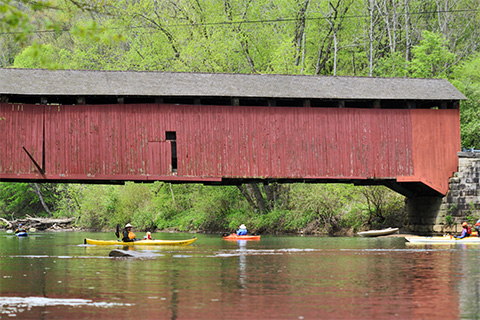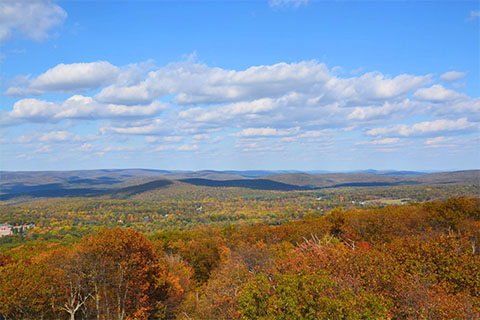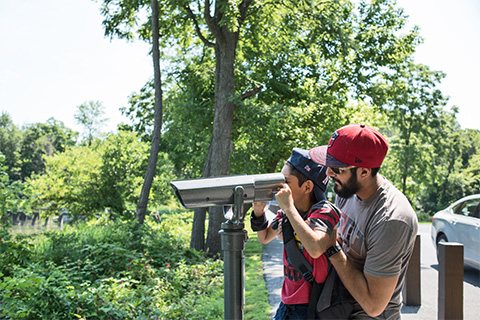Like many in the world of conservation, DCNR has made diversity, equity, and inclusion (DEI) a central focus over the past several years.
There is certainly plenty of work to do! Women, Black, Indigenous, and people of color (BIPOC), people with disabilities, and the LGBTQ community are underrepresented in our outdoor spaces and in conservation organizations.
As stewards of Pennsylvania’s natural resources, it is our job to conserve and maintain them for all the people, including generations yet to come.
One way to create more inclusive spaces is to ensure we are telling inclusive stories in our interpretation of these natural resources. DCNR is committed to enhancing interpretive programming at state parks and forests to be more culturally relevant.
Part of this effort must include interpretation beyond the well-known history familiar to parks and forests in the commonwealth.
Researching Cultural History in Pennsylvania State Parks and Forests

With help from a grant from Chesapeake Bay Gateways (National Park Service), DCNR is working with a contractor historian to research cultural history of select regions of the Susquehanna watershed (part of the Chesapeake Bay watershed).
Without the grant, DCNR interpreters do not have the capacity to thoroughly research or verify untold stories of Native Americans, women, or people of color and their connection to the landscape.
The Untold Stories of the Susquehanna project will pull together partners from academia, conservation landscapes, Pennsylvania Council on the Arts, Pennsylvania Humanities Council, Pennsylvania Historic and Museum Commission, National Park Service, and others to produce thoroughly researched reports on stories beyond the well-told tales currently presented.
The goal of the program is to identify core themes to explore, and to research several community narratives through primary source materials, oral history, and other materials to create a rich and culturally relevant understanding of peoples’ connection to the landscape.
Examples of the types of stories that might emerge can be found in Untold Stories of America’s National Parks (PDF) by Susan Shumaker.
Once completed, trainings and interpretative materials will be created to incorporate these untold stories into the way our staff and that of our partners understand and interpret the landscape.
Untold Stories of the Susquehanna

The Untold Stories of the Susquehanna project focuses on the parks and forests near Pine Creek Gorge of the West Branch of the Susquehanna River watershed in the Pennsylvania Wilds and the South Mountain conservation landscape in the Lower Susquehanna watershed.
The project will fill gaps in cultural interpretation and connect people to those parks and forests in new ways.
The Pine Creek Gorge is a 45-mile canyon known as the “Grand Canyon of Pennsylvania,” nestled in 160,000 acres of the Tioga State Forest. The state parks at either end draw over 210,000 people each year, and the Pine Creek rail trail has been voted one of the top 10 places to take a bike tour nationally.
The South Mountain Conservation Landscape is home to nearly 1 million people and serves as a model for regional place-making and economic development.
DCNR Work on Diversity, Equity, and Inclusion

Uncovering untold stories is just one part of a multi-faceted effort to improve DEI at DCNR. During the past few years, DCNR has undertaken:
- All-staff DEI trainings;
- Utilized GIS mapping to improve equity in grantmaking;
- Studied park and open space access across the state; and
- Incorporated DEI into the work of all our bureaus.
It is a long journey, but important work to make our parks and forests welcoming to all.